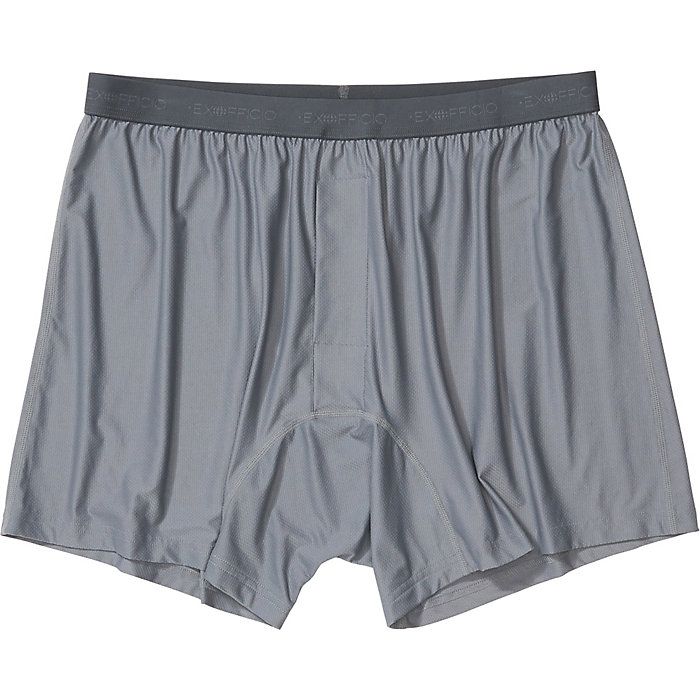Winter Camping Essentials to Pack this Season
Having nice gear is usually about being more comfortable. When the weather gets really bad however having the right tools can be a matter of life and death. Winter hiking may conjure images of soggy clothes muddy trails or mountainside helicopter rescues but many outdoor enthusiasts enjoy it. To make your own memories prepare by learning the local weather patterns especially as they relate to elevation. Winter camping offers a rare glimpse into untouched footprint- and crowd-free landscapes.
With no summer bugs and incredible sunsets you can sit in solitude surrounded by deafening silence. Unprepared for harsh winter conditions and freezing temperatures can ruin a trip that might otherwise be one of your favorites. Camping in snow is unlike camping in more temperate conditions. You'll need winter camping gear to stay safe and comfortable in the backcountry's cold weather and treacherous terrain.
Here is a camping checklist to help you stay safe and warm while camping.
1 Get the right tent

A good winter tent should withstand strong winter winds keep you warm and support the weight of falling snow. 4-season tents are well-equipped to withstand typical harsh winter conditions making them the best choice for winter tents.
A four-season tent will have thicker nylon a more giant ground-level rain fly wind-resistant poles and smaller ventilation panels. There's no limit to how much you can spend on a winterized tent; your choice will depend on-
- Terrain
- Number of campers
- Weather
- Weight limits
However choosing a tent that is too large may result in many cold spots in your tent making it difficult to get warm. A larger-than-necessary tent will also make transportation more difficult than necessary.
2 Sleeping bag and Insulated mat

It is also critical to insulate yourself from the ground in order to stay warm. A frozen ground zaps away body heat faster than the air outside and you lose more heat while sleeping due to conductive heat loss than anything else.
A sleeping pad has enough insulation to act as a buffer between your body and the ground reducing the possibility of excessive body heat loss. With a sleeping pad providing a comfortable weather-proof foundation you'll need something to trap your body heat and keep you comfortable and insulated. Cold-weather sleeping bags have synthetic insulation or goose down to keep you warm. They also have draft collars and zippers which allow them to provide superior heat retention.
3 Stove and Fuel

Don't forget to bring a camping stove on your winter camping trip. It's one of the most important parts of your camp kitchen for cooking melting water and heating. What you need in a stove is something that is efficient compact and capable of working in cold weather conditions. You will essentially have two options. You can use either canister or liquid-fuel stoves.
While liquid fuel stoves perform better in subzero temperatures they are generally slower and heavier. As a result of its compactness faster-boiling speed and weight a canister stove is usually recommended. Carry an extra stove in case the main one breaks down. Packing extra fuel — more than you think you'll need — whether it's white gas kerosene canisters or gasoline is always a good idea.
4 Kitchen Utensils

You might think that preparing tasty camping meals is more difficult in the winter but this is not always the case. Although rain snow and wind are all difficult to deal with cooking in the snow is actually not that difficult.
Camping pans sets are well suited to a variety of uses including family and backpacker camping. Food such as canned food soup pasta and eggs can be cooked or heated. It's ideal for anyone looking for a high-quality low-cost cookware set that's also small and portable. Ideal for a family vacation hiking picnicking and other outdoor activities. If you go with a liquid-fuel stove you'll need to buy a pot separately and it's best to go with something lightweight like titanium or aluminum. Cookware ranges from ultralight to budget but brands offer a good selection of middle-of-the-road options.
5 Quick drying Undergarments

Effective layering is key when hiking in winter starting with long underwear. Quality base layers will wick sweat from your skin keeping you warm and dry. All of the experts we spoke with recommended merino wool long underwear which is exceptionally warm and breathable even when wet and also fights odors. It's supposed to be cozy and hugging. It should also have wicking properties which allow it to drain sweat away from your skin and keep you dry and comfortable. As a result when layering avoid cotton clothing because cotton is terrible at wicking sweat away. It will keep you wet causing you to lose heat faster. Propylene clothing is a popular and inexpensive option.
6 Mid layers to stay warm

Whatever you put on top of your base layers will act as insulation and a variety of materials including synthetic fleece wool and down can do so. If you're working up a sweat at a lower altitude and there's no wind rain or snow you might not want to wear a full puffer jacket while moving — a lighter fleece option or even a T-shirt might be more comfortable. Just make sure you have something thicker with you in case you need to stop. The middle layer is what protects your body from the elements. Merino wool sweaters fleece and down jackets are all excellent insulating layers.
Select a lighter weight. For your base layer wear a merino wool top and bottom. For your mid-layer choose expedition weight. Remember that your mid-layer should be loose so that it traps heat in the air around your body while not restricting circulation. Choose a size or two bigger so it can fit over your base.
7 Waterproof jackets

A water-resistant jacket and pants are typically worn as your outer layer of clothing also known as a shell layer. The jacket and pants must be waterproof and windproof for winter camping. The best models are lightweight and breathable as well. This layer should provide adequate protection against rain snow and wind. For this layer a hardshell jacket with adequate weatherproofing will not disappoint.
There are numerous winter jacket options available to you. The choice between a true outer shell (minimal insulation but very lightweight) and an insulated jacket is significant (warmer but heavier). Insulated jackets today differ not only in insulation type and amount but also in water resistance breathability and of course design features such as the hood and pockets.
8 Socks, gloves, and hats

It's all well and good to keep your hands and feet toasty warm but you'll be miserable if you don't also protect your hands from the cold. That's why a good pair of gloves (or mittens) is essential for winter camping! The most important factor is quality insulation but those who intend to get their hands wet should consider waterproof gloves. When your ears become cold the rest of you will become cold as well. You can solve this problem by donning a warm winter hat of any style.
Frostbite and hypothermia are two major risks of winter snow camping. Staying warm and dry is the key to avoiding both. Wear thick gloves and socks to protect your extremities (hands and feet). Also keep your internal body temperature elevated. To avoid excessive sweating avoid becoming overly warm. Moisture-wicking clothing is extremely beneficial.
9 Waterproof Bag

Keep your winter camping gear dry with a waterproof backpack. Your backpack should also be comfortable light and large enough to hold all of your winter camping gear. The best winter backpack is determined by the length of your trip and the type of activity you intend to engage in (camping backpacking skiing etc). When selecting a winter hiking backpack look for one that is lightweight has external loops and compression straps.
You're better off investing in a dependable pack that you can use in all seasons — as well as an extra rain cover. However if you're going to be out for more than a couple of days and the terrain isn't too steep a sled and a large duffle will make your journey more comfortable. Throw everything into the bag secure it to the sled and pull it behind you with a tow harness as you ski or snowshoe.
10 Navigation tools and shovel

If you intend to hike while camping or simply need some tools to get to your campsite there are a few items to bring that will make your life a lot easier.
The first step in laying a good foundation is to pack down the snow at your camping spot. Doing so helps to keep the ground from melting easily. The good news is that you don't need much to get stable ground that will not melt. All you need to do for this step is stomp the snow at the site with your snowshoes. Hiking boots and skis can also be used.
Having a snow shovel on hand will make packing easier. In addition if you need more storage space in your vestibule you can use the shovel to dig into the snow to make enough space for your gear.
Final Thoughts
Camping is a mental endurance test that is not for everyone. It's not just about bugs, dirt, potential bad weather, poor personal hygiene, or even bad gear. You must approach the experience with the mindset that the unexpected may occur and that you may need to adapt. This is especially true when camping in cold weather when the conditions are harsher and less forgiving. Winter camping is simply camping (with a little more gear and preparation). Although it may appear intimidating, it is not too difficult. It's also a lot of fun for the whole family.
So, instead of storing your camping gear and cooping up for the entire season, set aside some time and go camping in the winter for yourself!






